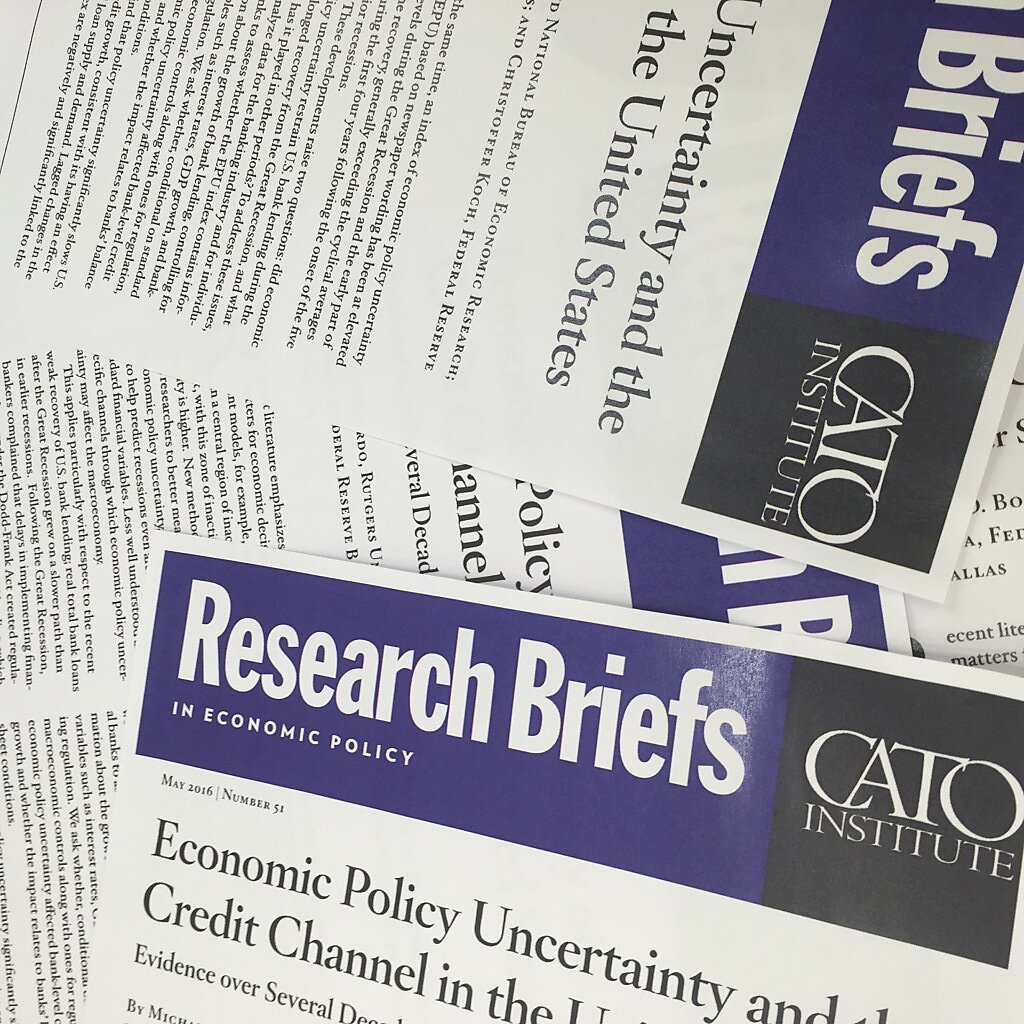The authors find that, holding other macroeconomic and regulatory factors constant, policy uncertainty “significantly slows U.S. bank credit growth.” To measure uncertainty, Bordo, Duca, and Koch use an economic policy uncertainty (EPU) index based on newspaper article wording. The EPU index shows consistently higher uncertainty in the four years after the Great Recession compared to four years after the five prior recessions. What has caused elevated uncertainty post ’08 relative to comparable time periods? Bordo et al. argue that Dodd-Frank accounts for at least part of this relatively high uncertainty. Dodd Frank not only vastly overhauled financial regulation, but did so in a way that left a uniquely large and substantive amount of rulemaking authority to administrative agencies. Three years after Dodd-Frank’s passage only half of the rules the law mandates had been finalized. Even now, regulators have still not implemented twenty-five percent of the rules required by the law.
Just what has the increased uncertainty, caused at least in part by Dodd-Frank, meant for bank lending? Examining data from 1961–2014, Bordo, Duca, and Koch show that uncertainty has a highly significant effect on real per capita bank loan growth. This significance is robust across various macroeconomic and regulatory variables, like changes in GDP growth, the fed funds rate, and bank capital rules. The authors also delineate their results by bank size, noting that uncertainty has a greater adverse impact on smaller banks.
The connection that Bordo, Duca, and Koch show between policy uncertainty and depressed bank lending is surely an important consideration for policymakers charged either with evaluating the legacy of Dodd-Frank, or with thinking about the reasons for slow post recession growth in general.
Disclaimer
This post was originally published at Alt‑M.org. The views and opinions expressed here are those of the author(s) and do not necessarily reflect the official policy or position of the Cato Institute. Any views or opinions are not intended to malign, defame, or insult any group, club, organization, company, or individual.
All content provided on this blog is for informational purposes only. The Cato Institute makes no representations as to the accuracy or completeness of any information on this site or found by following any link on this site. Cato Institute, as a publisher of this article, shall not be liable for any misrepresentations, errors or omissions in this content nor for the unavailability of this information. By reading this article and/or using the content, you agree that Cato Institute shall not be liable for any losses, injuries, or damages from the display or use of this content.


